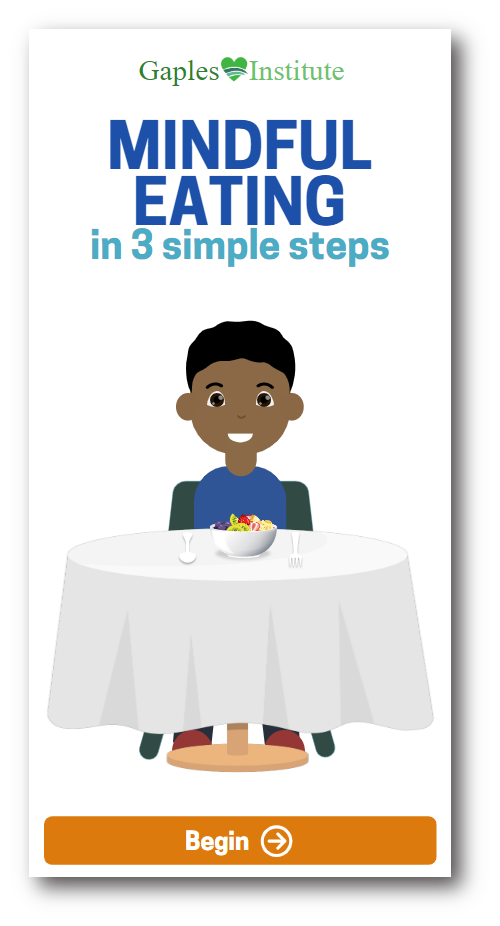Mindful eating is a simple but powerful skill that benefits both body and mind. And although we live in a fast-paced culture where distracted eating is the norm, eating mindfully is something anyone can learn with a little practice. Doing so can help you cultivate a healthier connection with your food—and more satisfaction with your meals.
What is Mindful Eating?
Mindful eating is a state of active, open awareness where you rest your attention on the full experience of eating. When we eat mindfully, we consciously observe all the sensations that arise from the aroma, taste, and texture of our food. We savor each bite without distractions.
Mindful eating also involves tuning in to the body’s built-in signals of hunger and fullness.
The results? We’re better able to experience greater enjoyment from our meals. And just as important: we’re empowered to more consciously choose not only what foods we consume, but also how much.
How Can Mindful Eating Lead to Better Health?
We’ve all experienced the discomfort of feeling overstuffed after a big meal, or mindlessly noshing a whole package of snack food in front of the TV. Mindful eating gives us tools to interrupt these unhelpful patterns. It allows us to tap into our best intentions for living and eating healthfully.
The benefits to our physical and mental health are many! Here are just a few:
- Empowerment to make intentional, healthy choices. As we invite the mind and body to fully focus on the experience of eating, we gain more clarity about the foods we’re reaching for. This awareness frees up our conscious mind to choose foods that not only satisfy our appetite but also provide nourishing fuel for our bodies.
- Less tendency to overeat. Mindfulness helps us perceive our body’s fullness signals when our appetite has been satisfied. In fact, many people find that eating mindfully results in consuming less food but enjoying it more.
- Improved digestion. Because we naturally eat more slowly when we incorporate mindfulness into our meals, we avoid overwhelming the digestive system with too much food all at once. And since mindful eating involves chewing food slowly and thoroughly, our bodies have greater opportunity to efficiently absorb the nutrients from our food.
- A break from life’s stressors. When we immerse in the act of mindful eating, we allow our busy minds a chance to relish the simple everyday pleasure of food. This—along with the feeling of gratitude that often follows—can support a more positive mood and help moderate negative emotions during tough times.
- A healthier relationship with food. By mindfully connecting healthy food with a sense of enjoyment, appreciation, and contentment, we can more easily enjoy eating as a nourishing act of self-care.
How to Eat Mindfully: 3 Steps You Can Use Right Now
Mindful eating is surprisingly simple. But shifting our eating habits out of autopilot does take some conscious effort. To make it a little easier, click below for a 3-minute interactive guide you can use anytime.
Turn Up Your Awareness and Turn Off the Autopilot
Although it might not be realistic to practice mindful eating for every single bite of food you consume, incorporating moments of mindfulness even for just a few bites can dramatically change your eating experience for the better.
Engaging all of our senses with the food we experience helps create a healthier awareness of what foods we’re choosing, why, and how much.
A side benefit: That same helpful awareness you develop toward your food can extend to other food-related activities too, like grocery shopping, cooking, and eating out—giving our minds the space to consciously choose foods and quantities that support our wellbeing.
More Food For Thought
We hope this exploration of mindful eating has helped you discover the small everyday pleasures of eating healthy food! For more on this topic, you might enjoy the book Savor by Thich Nhat Hanh and Dr. Lilian Cheung. And for more on mindfulness in general, check out our 2-minute guide to mindfulness meditation for beginners.
Interested in eating better for your own health?
Learn the essentials of good nutrition in our interactive, user-friendly nutrition learning program for the public.
Clinicians: Do you feel confident responding to patient questions about nutrition?
Take our award-winning condensed interactive nutrition CME—and learn what every clinician should know about nutrition.




